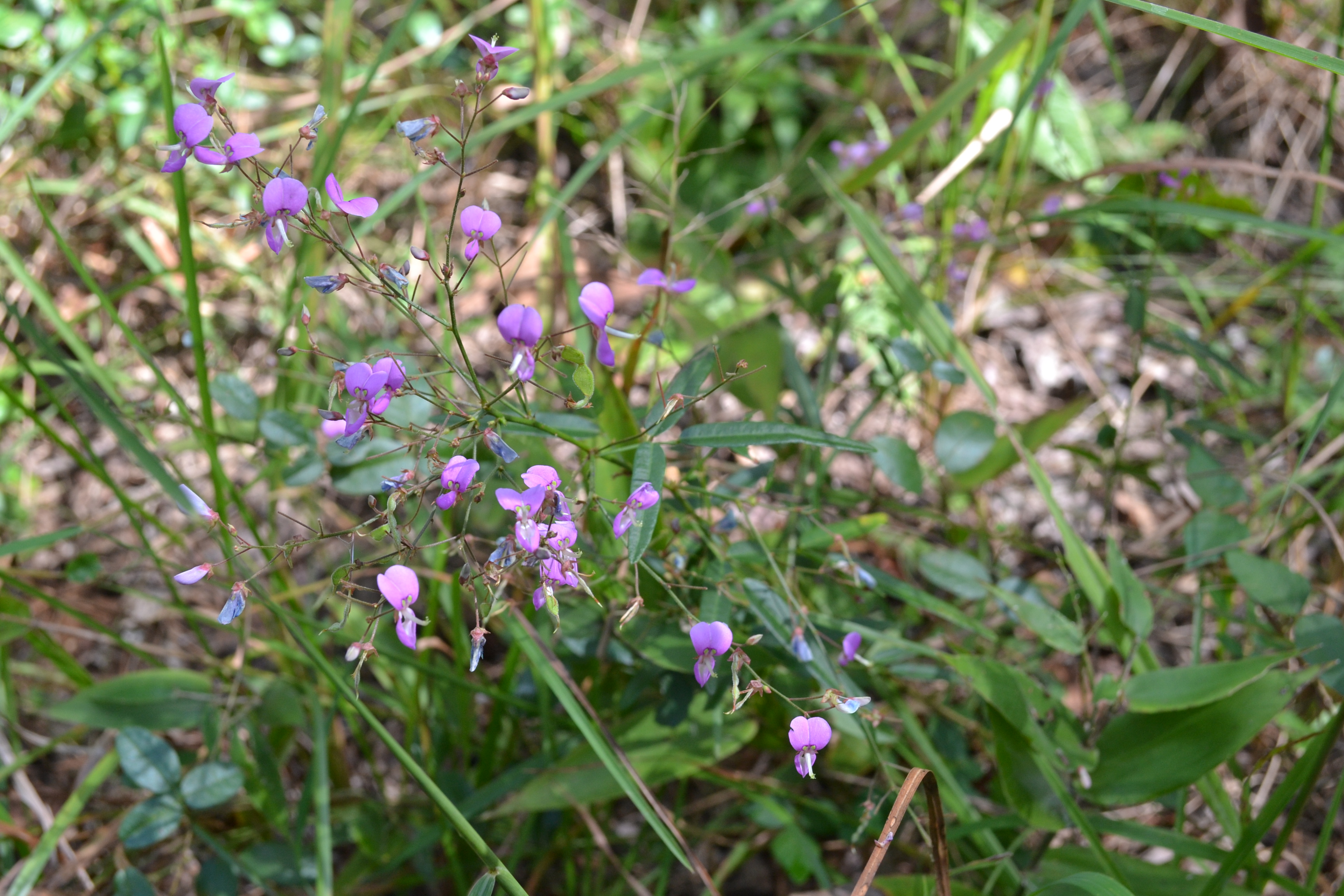Difference between revisions of "Desmodium paniculatum"
(→Description) |
|||
| Line 36: | Line 36: | ||
<!--===Fire ecology===--> <!--Fire tolerance, fire dependence, adaptive fire responses--> | <!--===Fire ecology===--> <!--Fire tolerance, fire dependence, adaptive fire responses--> | ||
<!--===Pollination===--> | <!--===Pollination===--> | ||
| − | + | ===Use by animals=== <!--Herbivory, granivory, insect hosting, etc.--> | |
| + | ''D. paniculatum'' produces seeds which attract birds and small rodents, including upland game birds such as bobwhite quail and wild turkey and rodents such as the white-footed mouse and deer mouse. It also serves as a source of food for cottontail rabbits, livestock, and other hoofed mammalian herbivores including white tailed deer.<ref name="Leif & Belt 2013">Leif J. and Belt S. (2013). Plant Guide for Panicledleaf ticktrefoil (Desmodium paniculatum), USDA-Natural Resources Conservation Service, Rose Lake Plant Materials Center, East Lansing, Michigan, 48823 and USDA-Natural Resources Conservation Service Norman Berg National Plant Materials Center, Beltsville, Maryland, 20705.</ref> | ||
| + | |||
<!--==Diseases and parasites==--> | <!--==Diseases and parasites==--> | ||
Revision as of 18:21, 11 December 2017
| Desmodium paniculatum | |
|---|---|

| |
| Photo by Kevin Robertson | |
| Scientific classification | |
| Kingdom: | Plantae |
| Division: | Magnoliophyta - Flowering plants |
| Class: | Magnoliopsida - Dicots |
| Order: | Fabales |
| Family: | Fabaceae |
| Genus: | Desmodium |
| Species: | D. paniculatum |
| Binomial name | |
| Desmodium paniculatum L. | |

| |
| Natural range of Desmodium paniculatum from USDA NRCS Plants Database. | |
Common Name(s): panicledleaf ticktrefoil[1]
Contents
Taxonomic Notes
Varieties: D. paniculatum var. paniculatum; D. paniculatum var. epetiolatum[1][2]
Description
Desmodium paniculatum is a facultative upland dioecious perennial forb/herb.[1]
Distribution
Ecology
Habitat
D. paniculatum is found in pine savannas, flatwoods, bogs, fields, woodland borders, and disturbed areas.[2]
Use by animals
D. paniculatum produces seeds which attract birds and small rodents, including upland game birds such as bobwhite quail and wild turkey and rodents such as the white-footed mouse and deer mouse. It also serves as a source of food for cottontail rabbits, livestock, and other hoofed mammalian herbivores including white tailed deer.[3]
Conservation and Management
Cultivation and restoration
Photo Gallery
References and notes
- ↑ 1.0 1.1 1.2 USDA, NRCS. (2016). The PLANTS Database (http://plants.usda.gov, 30 November 2017). National Plant Data Team, Greensboro, NC 27401-4901 USA.
- ↑ 2.0 2.1 Weakley A. S.(2015). Flora of the Southern and Mid-Atlantic States. Chapel Hill, NC: University of North Carolina Herbarium.
- ↑ Leif J. and Belt S. (2013). Plant Guide for Panicledleaf ticktrefoil (Desmodium paniculatum), USDA-Natural Resources Conservation Service, Rose Lake Plant Materials Center, East Lansing, Michigan, 48823 and USDA-Natural Resources Conservation Service Norman Berg National Plant Materials Center, Beltsville, Maryland, 20705.